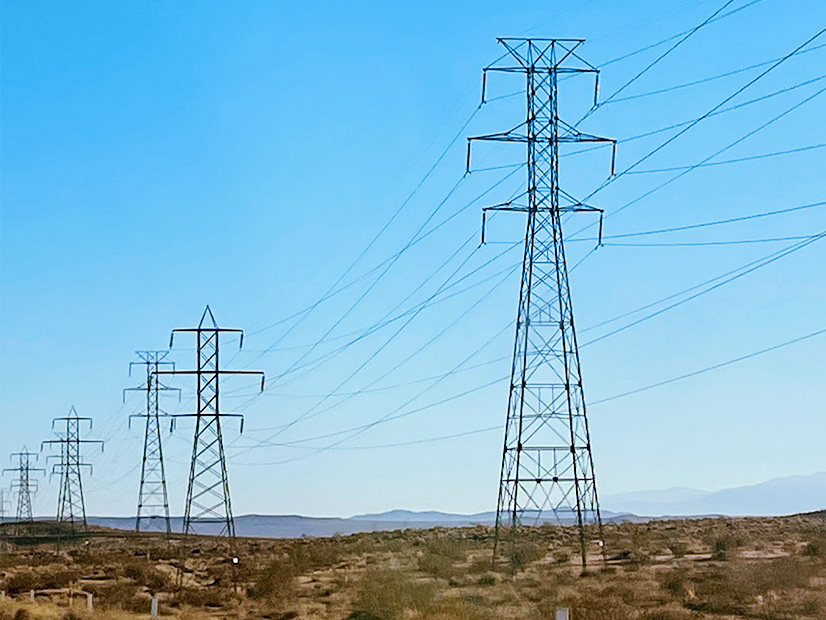FERC on Friday ordered show cause proceedings on PacifiCorp’s and NV Energy’s generator interconnection rules while approving, in part, rules aimed at limiting speculative projects in Nevada.
The first show-cause order (EL23-26) found that PacifiCorp’s large generator interconnection procedures might be unjust and unreasonable due to rules that trigger restudy of lower-queued customers when an interconnection customer suspends its agreement. The commission also questioned the requirement that the suspending customer pay for the restudies.
FERC Order 2003 requires interconnection customers to pay for their own studies, even if it is a restudy caused by another firm’s decision to withdraw its higher-queued project. The order also allows projects to suspend their interconnection agreements for up to three years, which gives developers flexibility to deal with permitting and other delays that are likely to impact large projects.
FERC issued a preliminary finding that PacifiCorp’s requirement is unjust and unreasonable because the company can require restudies when a developer only suspends its interconnection agreement, even though a restudy would not be needed if the project ultimately proceeds.
The second show-cause order (EL23-27) directs Nevada Power to show why its large generator interconnection procedures are just and reasonable despite not specifying a method for allocating the costs of network upgrades among interconnection customers in a cluster.
FERC has approved serial cluster studies for both ISO/RTOs and independent utilities, including PacifiCorp and NV Energy, subsidiaries of Berkshire Hathaway Energy. NV Energy’s 2013 update to its large generator interconnection procedures includes pro forma language that said it “may allocate the cost of common upgrades for clustered interconnection requests without regard to queue position,” but the procedures do not specify how those costs are allocated.
The specific costs significantly affect rates and should be included in the utility’s tariff, FERC said. Without specific rules on file, the commission said, it cannot easily determine whether any cost allocations are consistent with its precedent.
The two utilities must show cause as to why their rules are just and reasonable within 60 days, or they can propose changes under Section 205 of the Federal Power Act to address FERC’s concerns. A 205 filing would put the show-cause proceeding in abeyance while the commission considers the proposals.
The third order (ER22-2933) approves some changes NV Energy proposed to discourage speculative interconnection projects and allow projects that are ready to move forward with construction to get through the line faster. The utility has seen the number of requests to connect to its grid spike, and recently, 42% of them have either gone into default, been withdrawn, or have interconnection agreements under suspension.
To cut back on the speculative projects, NV Energy proposed increasing deposit requirements; eliminating the use of a “Preliminary Plan of Development” (a document used by the Bureau of Land Management when firms seek to build on federal land) as a form of site control; and setting a withdrawal penalty to hold remaining customers harmless from restudy costs. It also would create a graduated deposit structure based on project size, ranging from $75,000 for up to 50 MW; $150,000 for 50 to 200 MW; and to $250,000 for 200 MW or greater.
FERC approved the stricter site control requirements, including raising the deposit in lieu of site control from $50,000 to $250,000. Those rules will increase the likelihood that only commercially viable projects will have a place in the queue, FERC said.
The commission rejected the withdrawal penalties NV Energy proposed because it found that requiring such customers to cover restudy costs would prove too burdensome. Other utilities have withdrawal penalties, but they are more limited, FERC said.
FERC also rejected NV Energy’s proposal to require interconnection customers who suspend their agreements to pay for restudies of lower-queued projects. Because suspended projects still have the option to move forward, FERC ruled it would be “inefficient for [NV Energy] to conduct a restudy based on the assumption that a suspending interconnection customer is going to withdraw from the queue.”
The commission also rejected a rule that would have let Nevada Power assign the cost of network upgrades that were only triggered by one project in a cluster to that specific project. FERC found the language was not specific enough.
In discussing that rule, the commission also noted that it launched the second show cause proceeding against Nevada Power because its tariff does not include how the utility allocates the costs of network upgrades among interconnection customers in a cluster.




